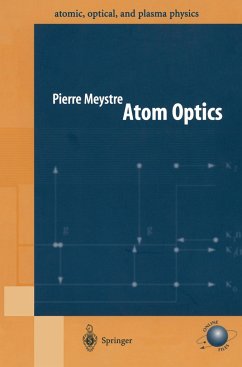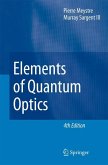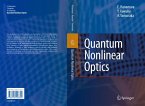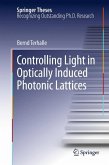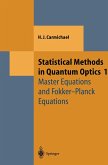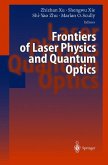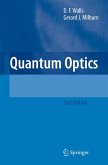One of the most profound revolutions brought about by quantum mechanics is that it does away with the distinction between waves and particles: atoms, in particular, can exhibit all the properties that we associate with wave phenomena, such as diffraction and interference; it has recently even become possible to prepare collections of atoms in coherent states, like those of photons in a laser beam. These developments are at the core of the rapidly expanding field of atom optics.
Atom Optics gradually leads the reader from elementary concepts to the frontiers of the field. It is organized in three parts, linear, nonlinear, and quantum atom optics. After a review of light forces on atoms and of laser cooling, the first part discusses the application of light forces to atom optical elements such as gratings, mirrors and lenses, matter-wave diffraction, and atomic traps and resonators. The discussion of nonlinear atom optics starts with a review of collisions from a viewpoint that clearly demonstrates its profound analogy with nonlinear optics. The last part, quantum atom optics, first recalls key results of many-body theory in a formulation geared specifically toward atom optics. This is followed by a discussion of atomic Bose--Einstein condensation and "atom lasers." The final chapters treat such applications as atomic solitons, four-wave mixing, superradiance, and conclude with the coherent amplification of matter waves. An online web component to the book, a gateway to atom optics, contains links to the leading references and journals in the field, to research sites, and to updates for the contents of the book.
Atom Optics gradually leads the reader from elementary concepts to the frontiers of the field. It is organized in three parts, linear, nonlinear, and quantum atom optics. After a review of light forces on atoms and of laser cooling, the first part discusses the application of light forces to atom optical elements such as gratings, mirrors and lenses, matter-wave diffraction, and atomic traps and resonators. The discussion of nonlinear atom optics starts with a review of collisions from a viewpoint that clearly demonstrates its profound analogy with nonlinear optics. The last part, quantum atom optics, first recalls key results of many-body theory in a formulation geared specifically toward atom optics. This is followed by a discussion of atomic Bose--Einstein condensation and "atom lasers." The final chapters treat such applications as atomic solitons, four-wave mixing, superradiance, and conclude with the coherent amplification of matter waves. An online web component to the book, a gateway to atom optics, contains links to the leading references and journals in the field, to research sites, and to updates for the contents of the book.
From the reviews:
"The book is well laid out and elegantly written."-The Physicist
"Atom optics today has reached maturity: It has become both wave (coherent) and nonlinear atom optics. Of course that expansion required generalization in a new book. Pierre Meystre has taken just such a generalist approach in his timely ATOM OPTICS. His were the pioneering works in atom optics; to get information from the first explorer is always most valuable to the reader ... Recommend[ed] to all strata of the physics community."
-PHYSICS TODAY
"Pierre Meystre has taken ... a generalist approach in his timely Atom Optics. His were the pioneering works in atom optics; to get information from the first explorer is always most valuable to the reader. ... The circle of potential readers of the book is very wide - from graduate students to professors ... . I therefore recommend it to all strata of the physics community." (Vladilen Letokhov, Physics Today, November, 2002)
"Pierre Meystre is a theoretical physicist at the University of Arizona. His book entitled 'Atom Physics' is the first book published on the subject. ... This book is well laid out and elegantly written. I believe that this book, combined with Hal Metcalf's 'Laser Cooling and Trapping', forms an excellent introduction at a postgraduate level to atom optics." (A. G. Truscott, The Physicist, Vol. 39 (4), 2002)
"The book is well laid out and elegantly written."-The Physicist
"Atom optics today has reached maturity: It has become both wave (coherent) and nonlinear atom optics. Of course that expansion required generalization in a new book. Pierre Meystre has taken just such a generalist approach in his timely ATOM OPTICS. His were the pioneering works in atom optics; to get information from the first explorer is always most valuable to the reader ... Recommend[ed] to all strata of the physics community."
-PHYSICS TODAY
"Pierre Meystre has taken ... a generalist approach in his timely Atom Optics. His were the pioneering works in atom optics; to get information from the first explorer is always most valuable to the reader. ... The circle of potential readers of the book is very wide - from graduate students to professors ... . I therefore recommend it to all strata of the physics community." (Vladilen Letokhov, Physics Today, November, 2002)
"Pierre Meystre is a theoretical physicist at the University of Arizona. His book entitled 'Atom Physics' is the first book published on the subject. ... This book is well laid out and elegantly written. I believe that this book, combined with Hal Metcalf's 'Laser Cooling and Trapping', forms an excellent introduction at a postgraduate level to atom optics." (A. G. Truscott, The Physicist, Vol. 39 (4), 2002)

